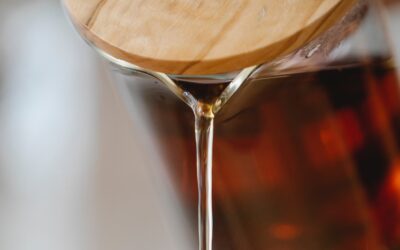William Morris once said “Have nothing in your house that you do not know to be useful, or believe to be beautiful.” I’d like to think I apply this wisdom to my garden, and rather than curse any weeds that spring up of their own accord I make use of them!


You will be familiar with Cleavers, also known as goose grass, clivers or (to my kid’s amusement) sticky-willy. It is a common roadside and hedgerow plant that clambers all over hedges and other plants. It sends out its first green shoots in January, being one of the first plants to sprout. Left unchecked it can become a bright green web of leafy stems by mid-summer. The whole plant is covered in velcro-like sticky hairs, including the seed, which stick to passing ankles, sleeves, pets etc hoping to be spread far and wide.
Cleavers (Galium aparine) was traditionally described as a ‘blood cleanser’, it promotes lymphatic flow aiding the removal of metabolic waste and helping clear infections of any kind. In their book Hedgerow Medicine Julie Bruton-Seal and Matthew Seal describe it as being like a pipe cleaner for our lymph vessels. It is a useful remedy for swollen glands, tonsillitis, adenoid problems and earache. It promotes the flow of urine, whilst being cooling and soothing, giving it a role to play in conditions such as cystitis, urethritis and kidney inflammation. It is also valuable in the treatment of skin conditions including eczema, acne and psoriasis. It also contains high amounts of silica, an essential nutrient for maintaining hair, skin and nail growth and repair.
I’m a little bit late harvesting it this year, traditionally it is a Spring Tonic, and its best used when the stems are young and before the plant sets seed and becomes tough. However I’m not going to eat them (young stems can be lightly steamed or added to omelettes) and I choose the newest shoots I could find.
First I’m going to make a cold water infusion. Personally I’m not keen on the texture of cleavers; even steamed I find the tiny hairs make it a bit harsh and difficult to swallow, however the taste, which is quite a surprising combination of cucumber and potato is very refreshing. Cold infusions take longer to make than hot teas but some herbs (including cleavers) lend their active principles better to cold water than to hot. For a detailed explanation of this you can look at The Herbal Academy, but put simply it is usually due either to:
- the presence of mucilage or bitter constituents that are easily soluble in cold water but would be denatured, to a certain extent, by boiling water or
- when the herb contains a delicate volatile oil constituent or
- alternatively it may be that the herb contains a constituent that is not desired, and is not readily dissolved by cold water
Cleansing Cleavers Cold Infusion:
(best made fresh on an evening and drunk the next day)
A big handful of fresh cleavers
several slices of cucumber
2-3 slices of lemon
a few fresh lemon balm leaves (optional)
300ml filtered water
Place all the ingredients in a glass jug, cover and leave in the fridge overnight
Strain the liquid through a fine sieve and drink on an empty stomach first thing in the morning to help clear the skin and aid elimination of wastes.
Cleavers vinegar:
I’ve recently started experimenting with making medicinal vinegar. This type of preparation is an eminently old one, having been used since the days of Hippocrates. Vinegar makes a excellent solvent and preservative, as well as being inexpensive, its also useful if for any reason you want to avoid using alcohol. The medicinal vinegar can then be used as a base for salad dressings, or can be easily converted into syrups or oxymels to make it more palatable for internal use (more about these in my next blog). If you use an unpasteurised apple cider vinegar with “the mother” you also get the additional benefits of its beneficial bacteria, similar to SCOBY in kombucha making.
You’ll need:
A glass kilner jar (you need to avoid using jars with a metal lid as this will react with the vinegar)
1 part fresh cleavers, leaf and stem (picked before it has flowered/set seed)
2 parts apple cider vinegar (you can also use white wine vinegar)
A glass kilner bottle
- Wash the cleavers and allow to dry thoroughly before roughly chopping and placing in the sterilised glass jar
- Pour in the vinegar to cover the cleavers and store in a cool dark place for 2-4 weeks
- After 2-4 weeks strain the herbs from the vinegar and transfer the vinegar to a clean bottle.
- Label and date the bottle


Hi there,
I am specifically looking to clear excess debris from the seeds before roasting them. Or is that even necessary?
Thank you.